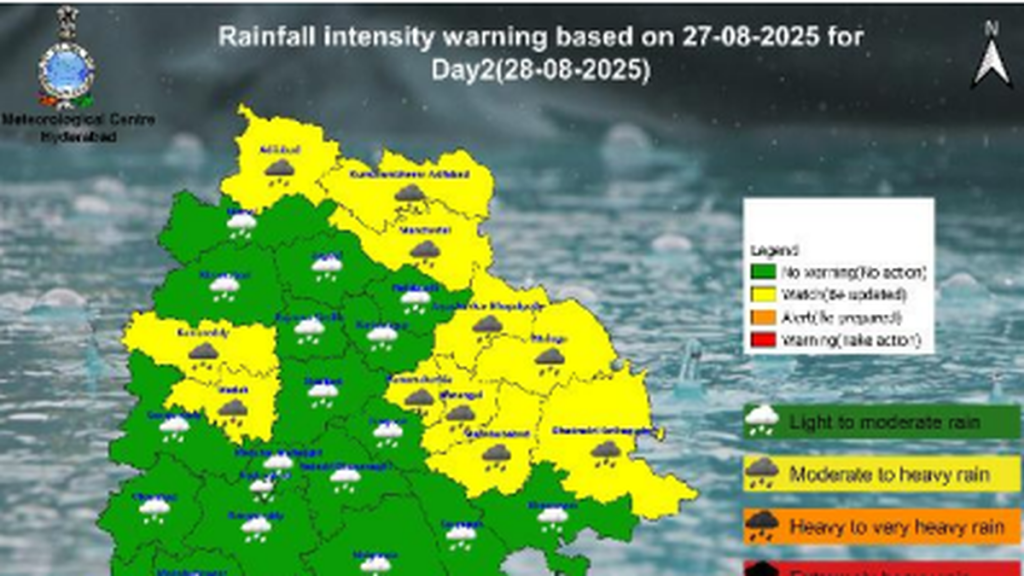Now Reading: Foraging, Fishing & Farming Canada’s Natural Bounty
-
01
Foraging, Fishing & Farming Canada’s Natural Bounty
Foraging, Fishing & Farming Canada’s Natural Bounty
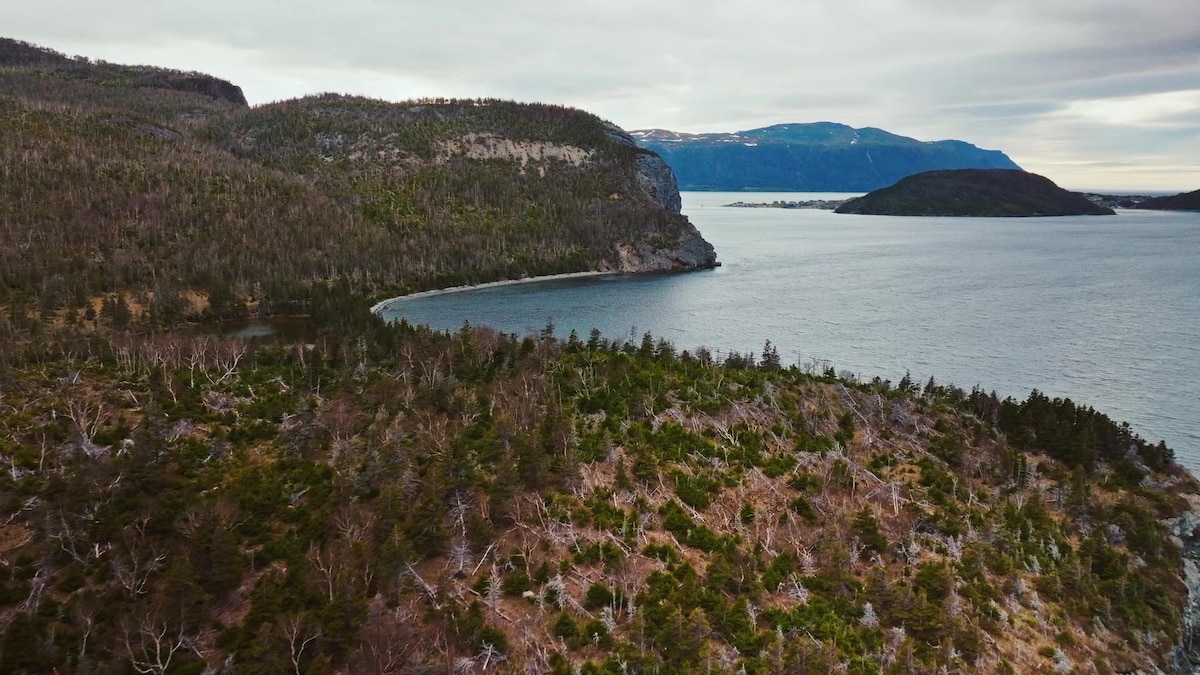
Matthieu Paley must be onto his 20th oyster, and he’s showing no signs of slowing down. We’re beginning to suspect this is not entirely in service to photojournalism. “Every minute they taste different,” he exclaims. “Let me try it again… just to make sure!” Oysterman Jeff Noye is unfazed, however, as he uses what looks like a double-sided rake to bring up a fresh batch of shellfish from the seabed, shucking them in short shrift and taking a moment to sample one himself. “A lot of people in this community make their living off oysters,” he explains to Paley. “So, when you grow up around here, no matter what you do, you’re connected somehow.”
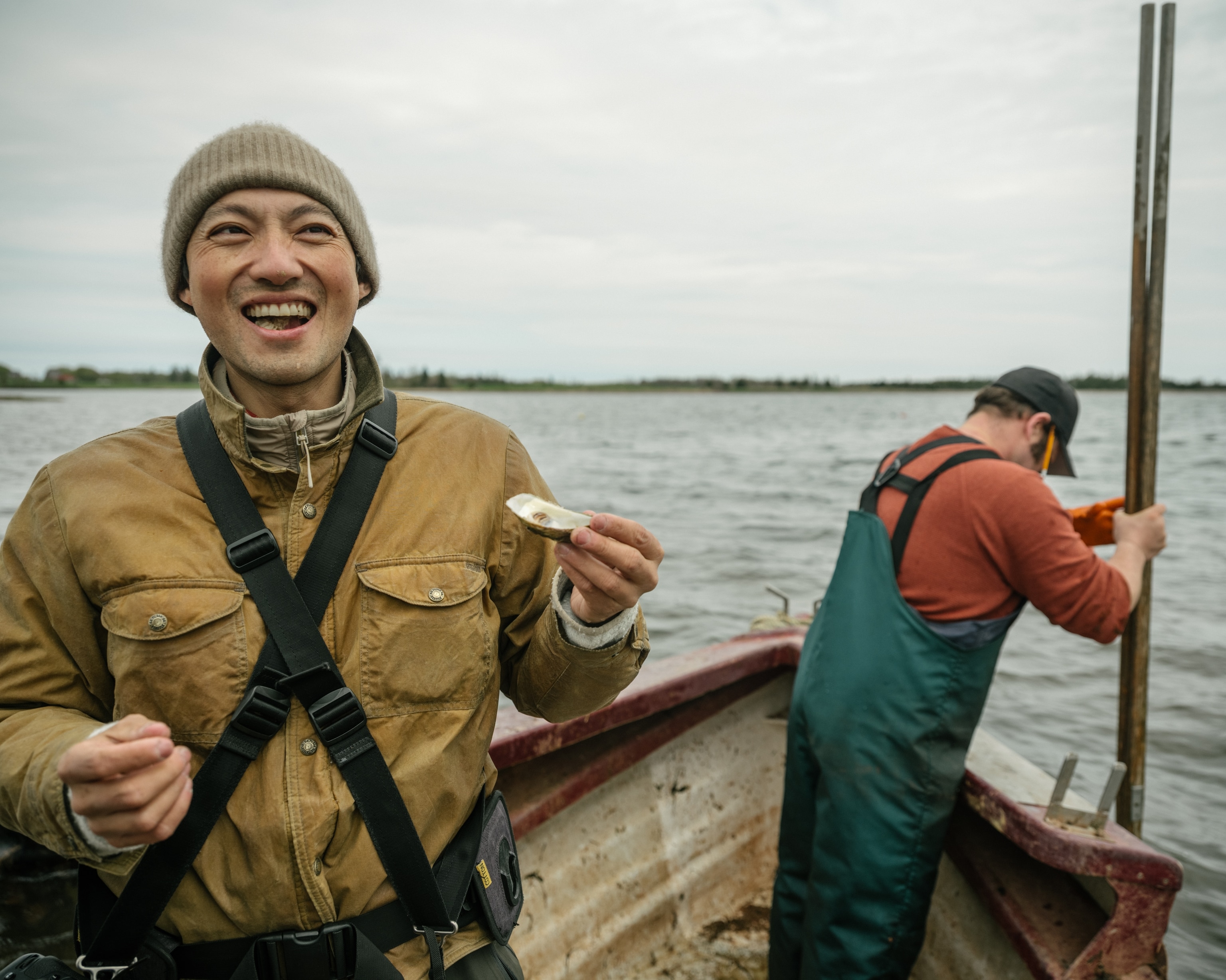
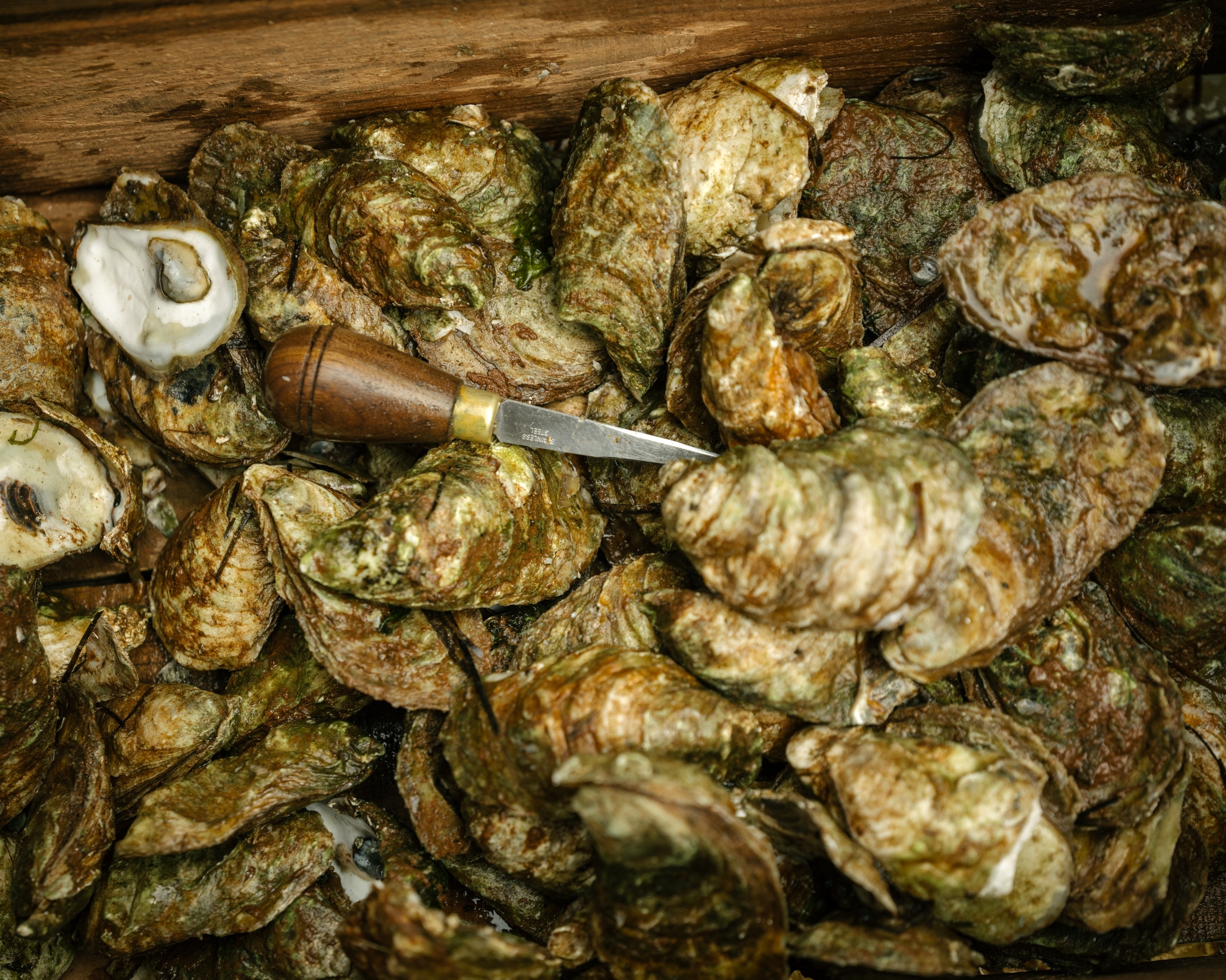
One of Matthieu Paley’s travel buddies, National Geographic photographer and Explorer Kiliii Yüyan, enjoys his umpteenth oyster straight from the ocean with oysterman Jeff Noye at Tyne Valley in Prince Edward Island.
Photographs by Matthieu Paley
We’re at the start of a road trip along Canada’s eastern seaboard, crossing Prince Edward Island (PEI) and the much larger island of Newfoundland with Paley and two of his fellow National Geographic photographers, Ami Vitale and Kiliii Yüyan. The goal is a simple one: To find out what life in Canada looks like through three different lenses—both literally and figuratively.
For Paley, food is a perennial fascination—and pleasure. From a photojournalism perspective, it is the way food connects us to nature and to each other that has driven many of his assignments with National Geographic. And here in Atlantic Canada, there are ample opportunities to meet people who forage in forests, farm the land, and fish the sea. And, of course, to break bread with them. “We restrict our diet so much nowadays,” he says. “These people are artists to a degree—they have this creative vibe as cooks and they find food in the purest way, depending on the wildness of the world.”
As the shucking (and scoffing) continues, it becomes clear that Noye is one such creative type—in fact, he’s something of a renaissance man. Besides supplying oysters to outlets across PEI, he’s also a former teacher, a restaurateur, guitarist and amateur actor. He’s even mayor of his local town, Tyne Valley.
After they’ve had their fill of oysters, Noye invites Paley and the group to Valley Pearl Oysters, his distribution center and restaurant. Here, we find him both hosting and performing in what turns out to be a very bawdy dinner theater performance, attended entirely by locals, outside of the film crew.
“That guy’s energy is contagious,” laughs Paley, who is not short on energy himself. In fact, he describes it as a key element in his creative process. “If you’re bringing joyful energy, you will have joyful people. You definitely affect the look of the image [you’re creating] by the way you come in.”
The next day, Paley finds himself shifting from the ocean’s bounty to a forest feast, as he meets a man for whom the woods are a rich repository of delicious flavors…
“Read the landscape. Once you figure that out, the world’s your oyster, right,” says Nick Chindamo as he delicately snaps off the tip of a dame’s rocket plant and hands it to Paley to taste. “We call that landscape literacy.”
We’re in the Bonshaw Hills Provincial Park, a tract of forest 20 minutes’ drive from Prince Edward Island’s capital, Charlottetown. It is Paley’s birthday, and as luck would have it, we’re doing one of the activities he’s been especially excited about—foraging.
Chindamo has an encyclopedic knowledge and a deep love of the flora that grows in PEI’s forests and wild places, and especially edible plants. A self-proclaimed “forager, chef and flavor (re)discoverer,” Chindamo is the perfect guide to the woods in Canada and their bounty.
Over the course of three hours, he introduces Paley and the group to the world of plant identification, foraging, and flavor discernment, all the while filling his forager’s basket with a medley of plants including nettle, fiddlehead fern, cow parsley and bluebead lily.
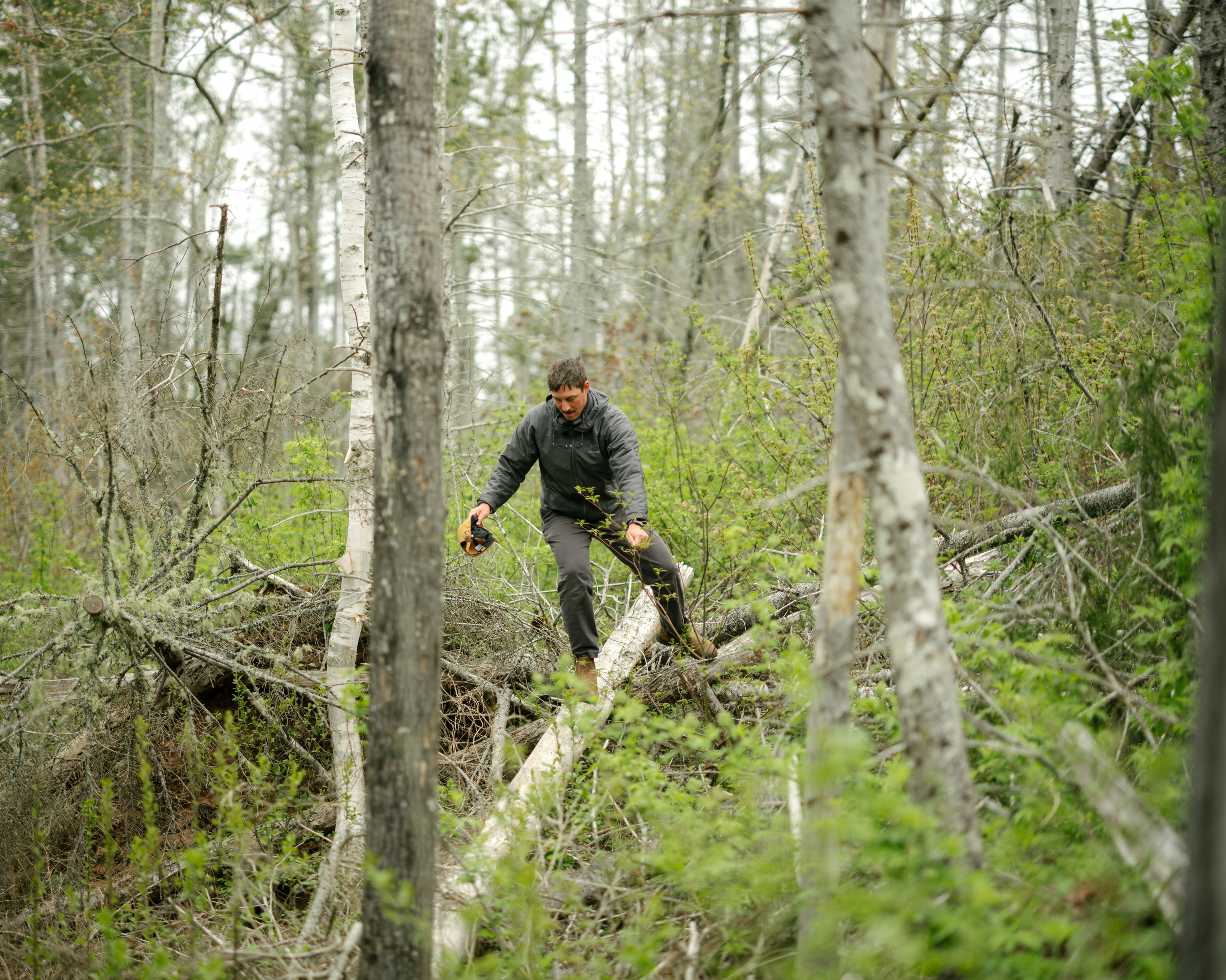
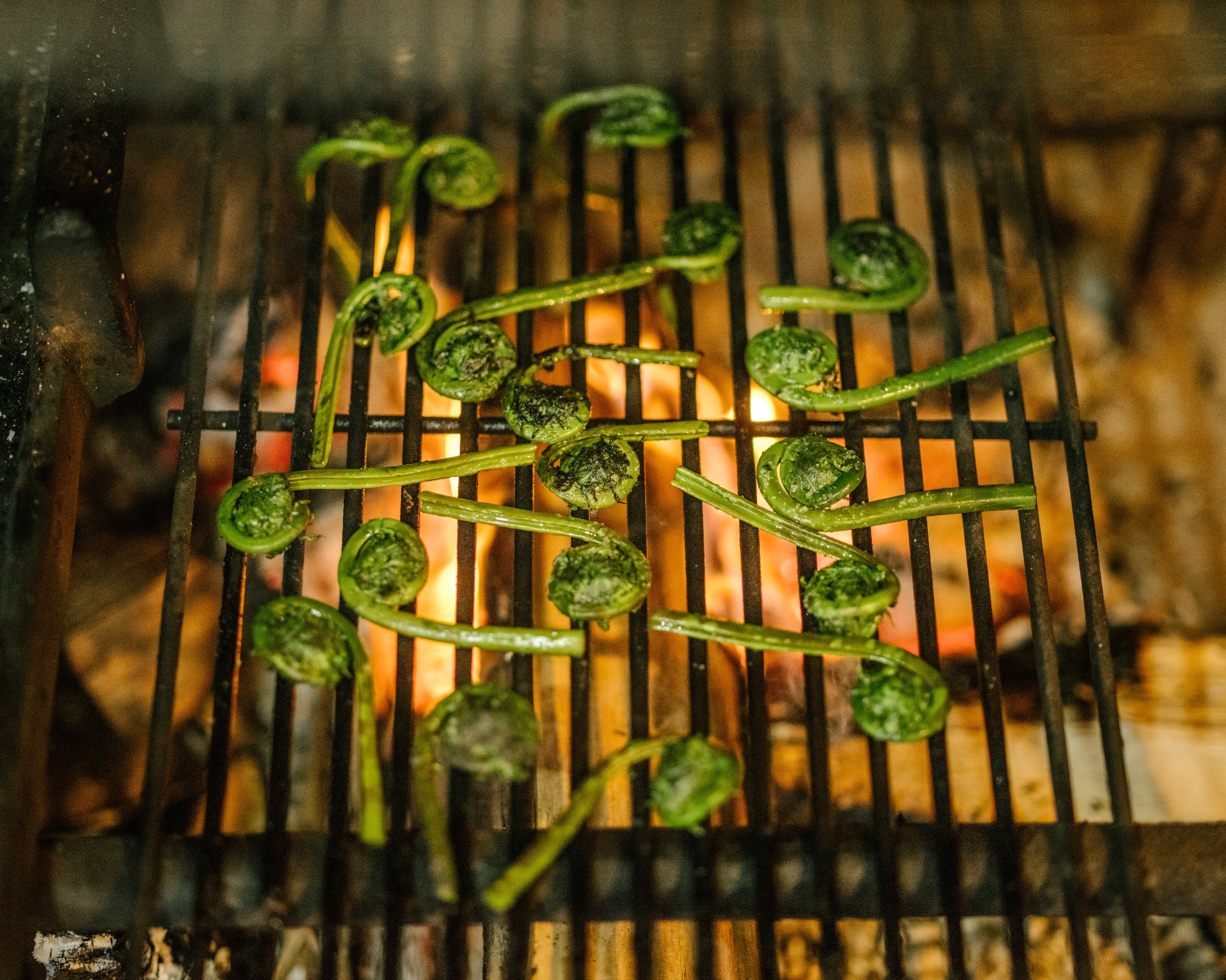
(Left) Nick Chindamo forages for lunch in the lush green hills of Bonshaw Hills Provincial Park. Later, his harvest of fiddleheads heads to the grill at The Inn at Bay Fortune (Right).
Photographs by Matthieu Paley
All of which is catnip to Paley. When he’s not on photojournalism assignments, he spends much of his time tending a food forest he has been growing for the last five years at his home in Portugal. “I used to be quite superficial in my admiration of the beauty of the landscape,” he remarks to Chindamo. “To see it also as a health provider, a food provider is wonderful, right? It makes walking in the woods very different.”
Chindamo agrees. “Wild plants and wild food in general have been ingrained in us as humans forever. None of these things are undiscovered. We are now just rediscovering them. And figuring out how to integrate them into our current lifestyles.”
Chindamo plies his trade at The Inn at Bay Fortune on Prince Edward Island’s east coast, under the guidance of acclaimed chef and writer Michael Smith. That afternoon, Paley joins Chindamo in the kitchen, where he shares some of his cooking techniques, turning out delicious tasting dishes like smoked fiddleheads, salted and drizzled with olive oil and just a dash of vinegar. “You really get the sense that nature is this temple for him,” says Paley. “I’m so impressed with his palate—these dishes are delicious!”
If Prince Edward Island is renowned for its shellfish, the island of Newfoundland is famed for its cod. It’s said there was a time when Newfoundland and Labrador fishermen could step out of their boats and walk on the waves thanks to the sheer quantity of cod in the water. Or so the story goes until rampant overfishing led to the fishery’s spectacular collapse. “In ’92, they put a moratorium on us and kept her closed for thirty-two years. We lost a lot of people up to Alberta. But I stuck to the old rock.”
Retired fisherman Pete Decker speaks matter-of-factly, but these were events that almost led to the destruction of an entire community. Decker was born and bred on Fogo Island—Newfoundland’s largest offshore island, home to a Celtic fishing culture that goes back generations.
Chatting with Decker and his children, PJ and Amanda, Paley gets a profound sense of the island’s seafaring heritage—and of the ways in which that heritage is being kept alive via Shorefast, an innovative charity that is combining experiential and cultural tourism with the traditional fishing economy. “We use what we know,” says Amanda Decker as she shows Paley the wood shop where artisans use traditional boat building techniques rooted in Celtic fishing cultures to create high-end furniture, some of which can be seen in the luxurious Fogo Island Inn, arguably Newfoundland & Labrador’s most iconic hotel. “By coming together like that, it created a way for Fogo Island to survive and to come into the future.”
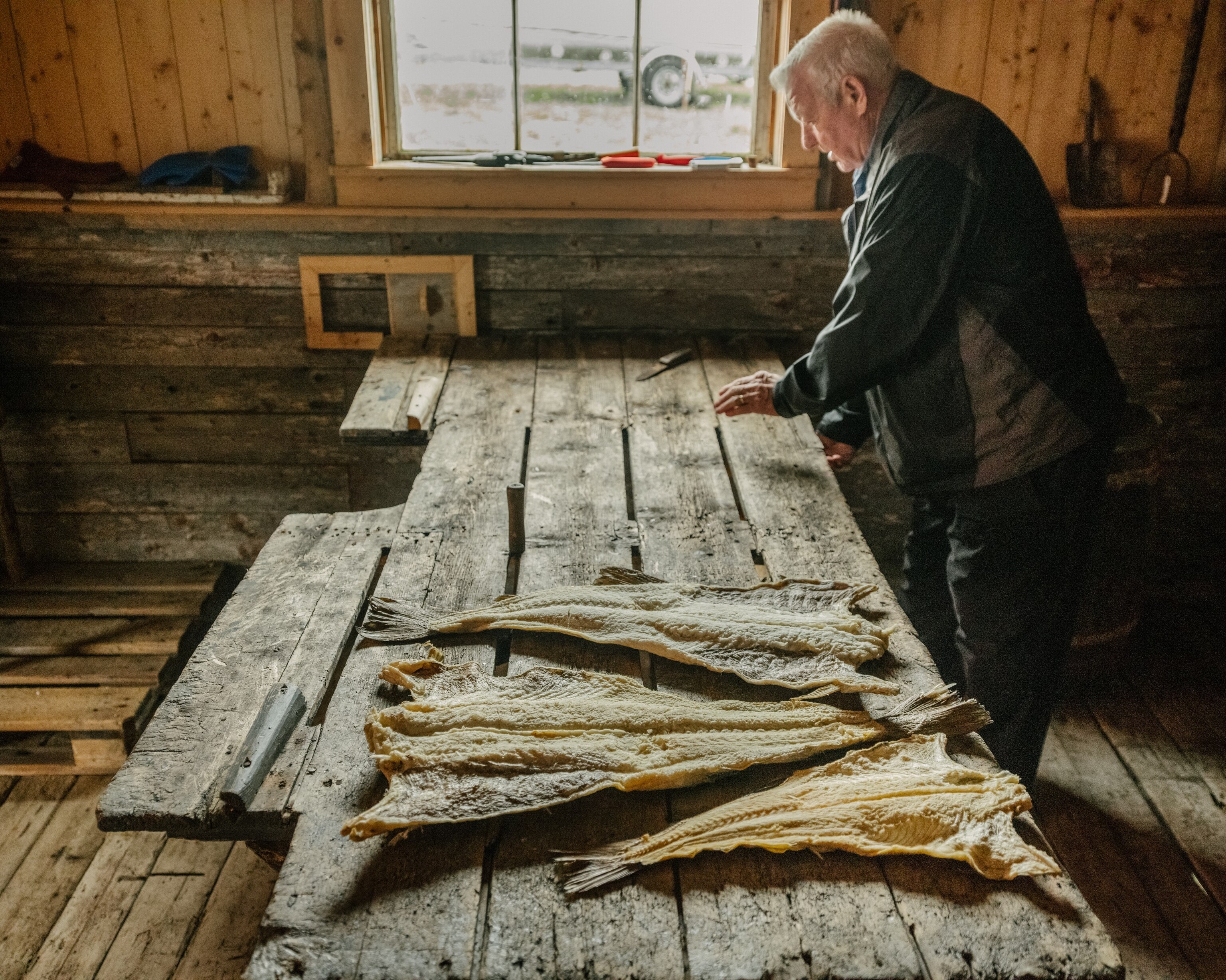
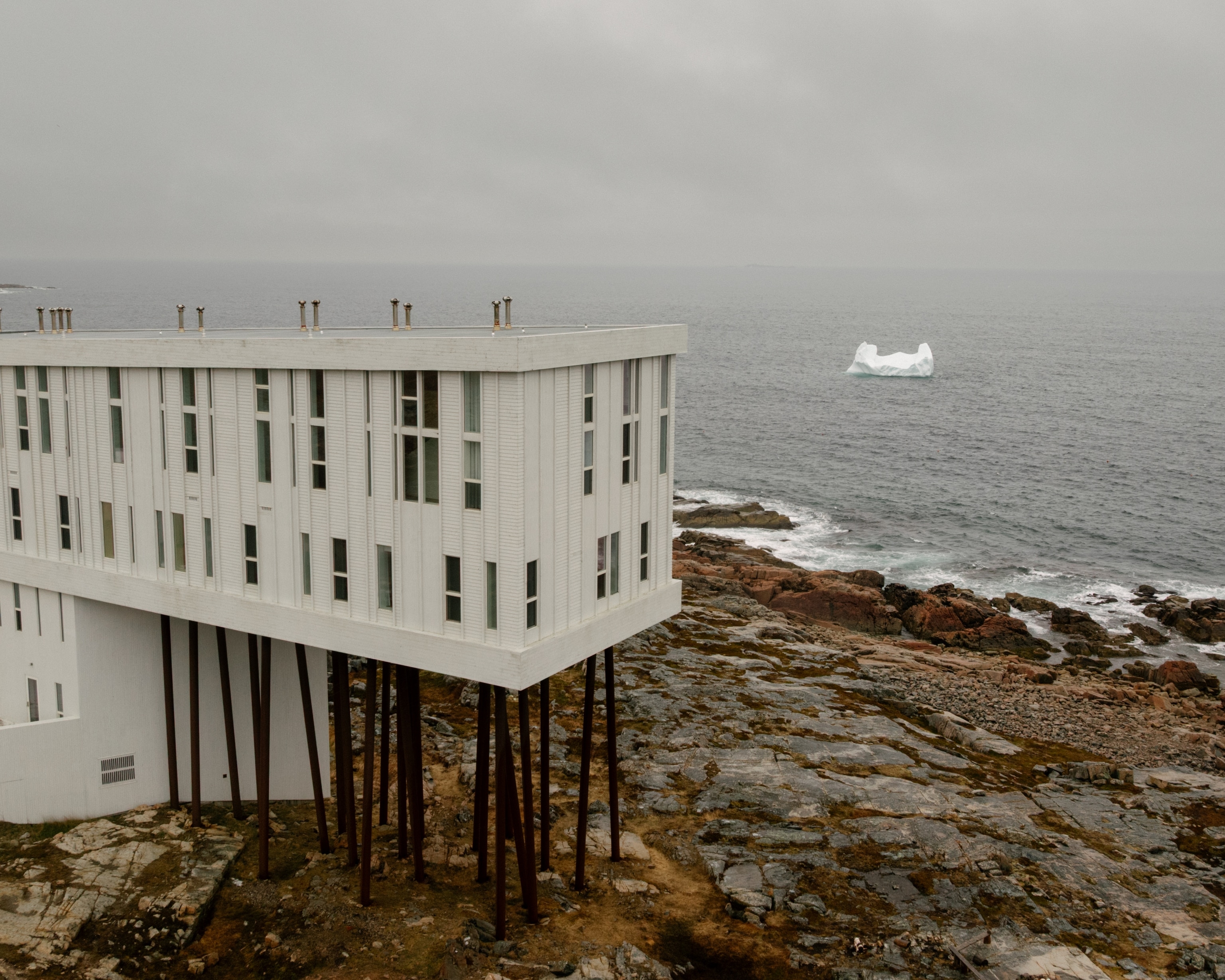
Fogo Island’s rich past of cod fishing meets its future with the modern lines of Fogo Island Inn.
Photographs by Matthieu Paley
“You can be an inspiration for others with stuff like that,” says Paley. “Looking at old tradition, and repurposing it forward.”
Fogo Island really resonates with him. “It feels like an end-of-the-world place,” he says. “The people are more secluded, and they have time—they can sit and give their day to you and accept you like family.”
This last sentiment is one that Paley believes can be applied to all of Atlantic Canada. Perhaps it’s the fact that people here live close to nature. Or perhaps it’s the relatively low population density enjoyed by these eastern provinces. Or it could be something innate in Atlantic Canadians, whose Celtic and Indigenous communities have been able to safeguard their customs and traditions, and adapt them to a changing world. Whatever it is, Paley is a fan.
“I like to be in contact with these people,” he says. “It’s good for your health.”



